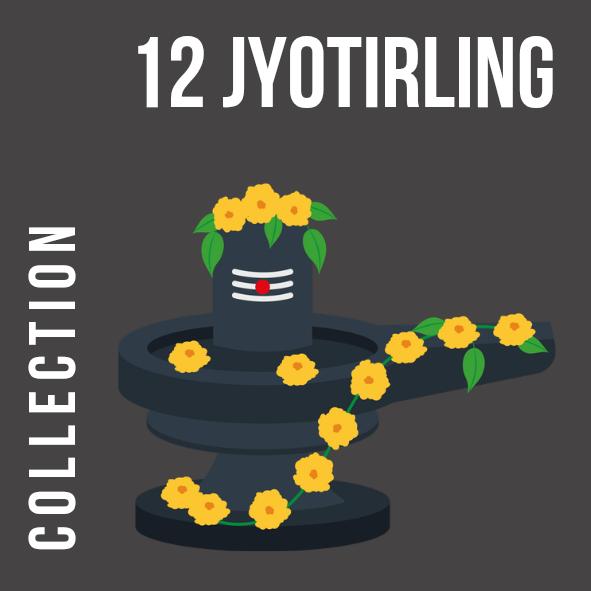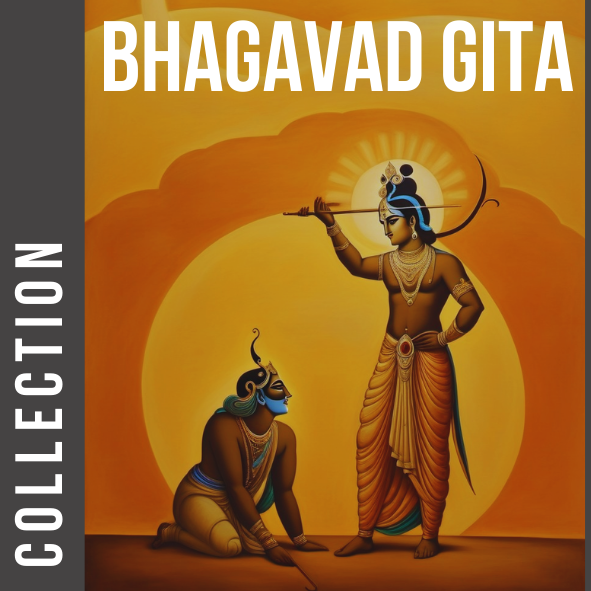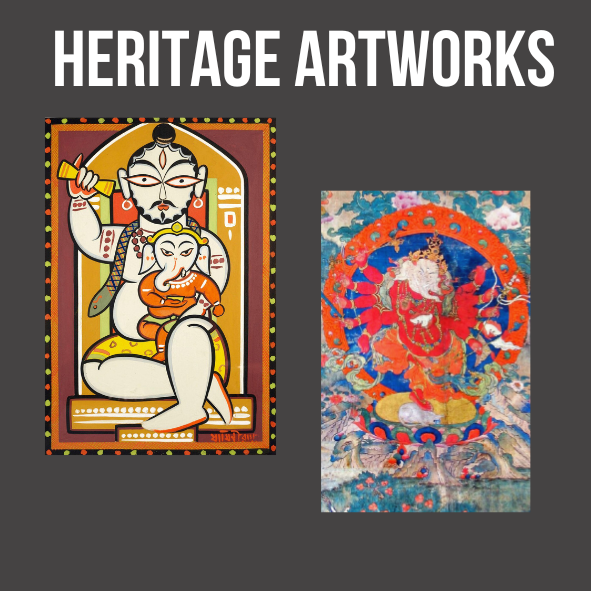Ravana – The Tragic Titan of Ambition
Share
Ravana, the formidable demon king of Valmiki’s Ramayana, is a character of unparalleled complexity, blending brilliance with hubris. As the ten-headed ruler of Lanka, he is both a scholar and a tyrant, revered for his intellect and feared for his ambition.
A devotee of Shiva yet driven by ego, Ravana’s actions ignite the epic’s central conflict, making him a pivotal figure among the Icons of Ramayan. His story is a cautionary tale of power unchecked by virtue. This blog explores Ravana’s extraordinary origins, his role as the epic’s antagonist, a defining moment of his valour, and his enduring legacy, ensuring his card is a striking addition to your collection.
The Making of a Legend
Ravana was born to the sage Vishrava and the Rakshasa princess Kaikesi, his lineage blending divine and demonic heritage. Raised in a world of austerity and ambition, he surpassed his siblings, including Kumbhakaran and Vibhishan, in intellect and prowess.
His ten heads, a symbol of his vast knowledge, encompassed mastery over the Vedas, arts, and warfare. Seeking power, Ravana performed rigorous penance to appease Lord Shiva, enduring millennia of devotion. Pleased, Shiva granted him the Chandrahas sword and near-invincibility, with the caveat that only a divine being could slay him.
Ravana’s ambition led him to conquer Lanka, ousting his half-brother Kubera, and transforming it into a golden empire. His mastery of sorcery and music—he composed hymns to Shiva—earned him respect, yet his ego grew unchecked.
Marrying Mandodari, a woman of wisdom, and siring warriors like Indrajit, Ravana built a formidable dynasty. His early conquests, defeating gods and kings, cemented his reputation as a titan, but his hubris sowed the seeds of his downfall, setting the stage for his clash with Rama.
The Antagonist’s Epic Quest
Ravana’s role in the Ramayana is catalytic, driving the epic’s conflict through his abduction of Sita. Enraged by his sister Surpanakha’s mutilation at Lakshman’s hands, Ravana sought revenge, captivated by Sita’s divine beauty.
Employing Maricha’s illusion of a golden deer, he lured Rama and Lakshman away, abducting Sita to Lanka’s Ashoka grove. His refusal to heed Mandodari’s or Vibhishan’s counsel, blinded by desire, escalated tensions, inviting Rama’s wrath.
As Rama’s Vanara army built the Ram Setu bridge to invade Lanka, Ravana marshalled his Rakshasa forces, including his son Indrajit and brother Kumbhakaran. His strategic brilliance shone in early battles, using sorcery to outwit foes. Yet, his arrogance alienated allies like Vibhishan, who defected to Rama.
Ravana’s relentless fight, even as his kin fell, culminated in a climactic duel with Rama. Despite his divine boons, Rama’s celestial arrows felled him, ending his reign but etching his name in the epic’s lore as a formidable foe.
A Moment of Valour
Ravana’s most striking moment was his final battle with Rama. On Lanka’s war-torn fields, clad in golden armour, he faced Rama’s arrows with ferocity. Wielding the Chandrahas and summoning sorcery, Ravana’s ten heads roared, unleashing a barrage of celestial weapons.
His chariot soared, defying the Vanaras’ assaults, until Rama’s Brahmastra pierced his heart. This defiant stand, a blend of might and hubris, immortalises Ravana’s tragic valour, a vision for his card, standing tall amidst chaos.
Celestial Dominion and Flawed Virtues
Ravana’s powers were godlike, rooted in his boons and intellect. His sorcery conjured illusions, as seen with Maricha’s deer, while his strength rivalled Indra’s. Shape-shifting and mastery of divine weapons like the Chandrahas made him a terror in battle.
His knowledge of the Vedas and music showcased a scholarly depth, yet his virtues were marred by hubris. His devotion to Shiva was genuine, but his arrogance led to moral lapses, alienating even his brother Vibhishan.
Ravana’s charisma commanded loyalty from his army, but his refusal to heed wise counsel—Mandodari’s pleas or Vibhishan’s warnings—revealed his tragic flaw. This duality makes him a compelling figure, neither wholly evil nor redeemable.
The Eternal Shadow of Ambition
Ravana’s legacy is complex, revered and reviled. In India, he is a symbol of intellect undone by ego, his effigies burned during Dussehra to mark Rama’s victory. Yet, some traditions, particularly in Sri Lanka, honour his scholarship and devotion to Shiva, with temples like the Ravana Cave shrine.
His hymns, like the Shiva Tandava Stotra, are chanted today, reflecting his cultural impact. Globally, Ravana fascinates as a tragic anti-hero, his story a warning against unchecked ambition.
In literature and theatre, Ravana’s multifaceted nature captivates, his ten heads a metaphor for human potential and peril. His legacy endures, teaching the balance of power and humility.
An Icon for Your Collection
Ravana’s card is a bold addition to the Icons of Ramayan collection. Envision its front: Ravana, ten heads aglow, wielding the Chandrahas in battle. The back, with its QR code to this blog, invites collectors to explore his saga. This card celebrates a titan whose ambition shapes the epic, a must-have for enthusiasts.



